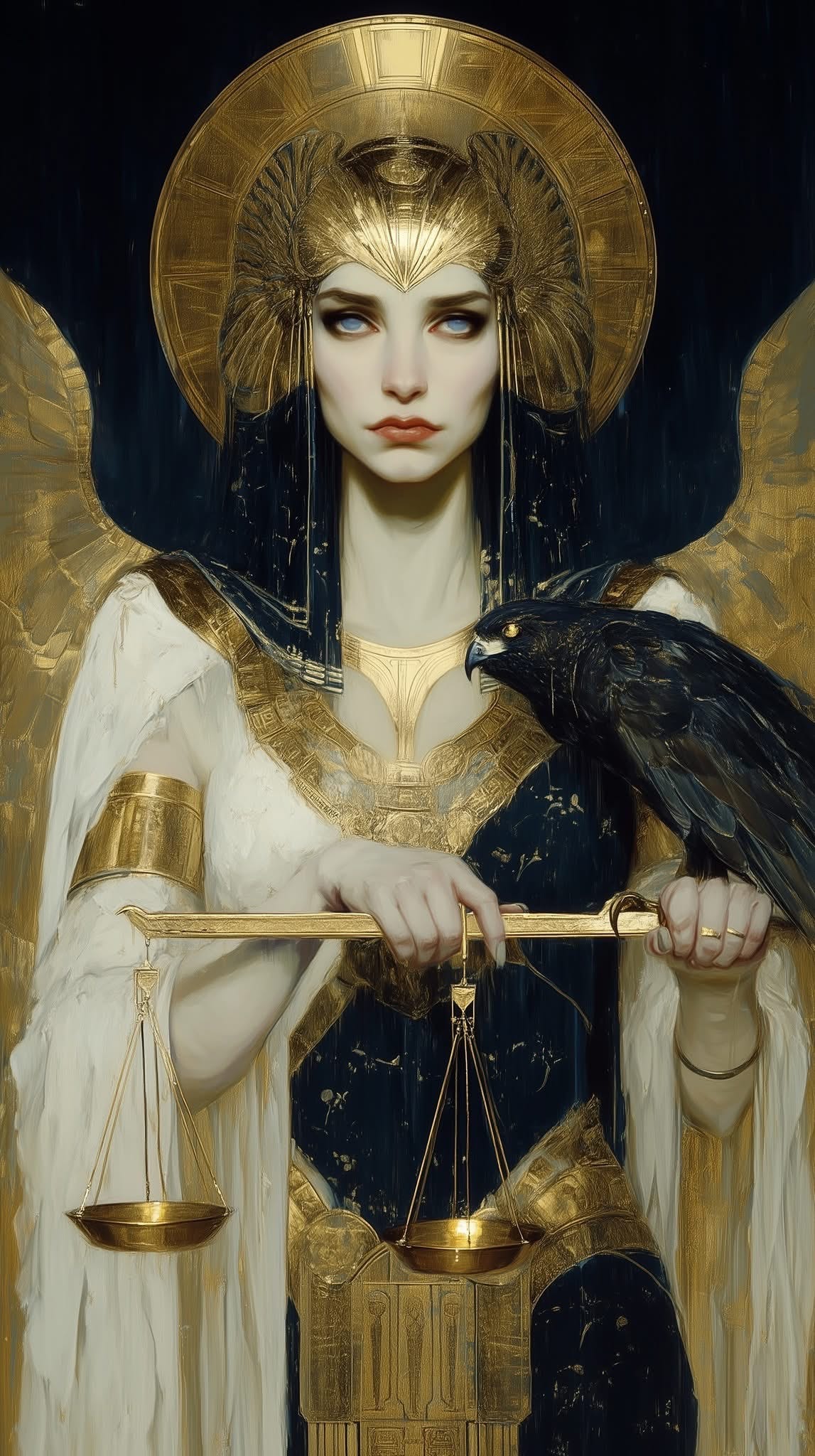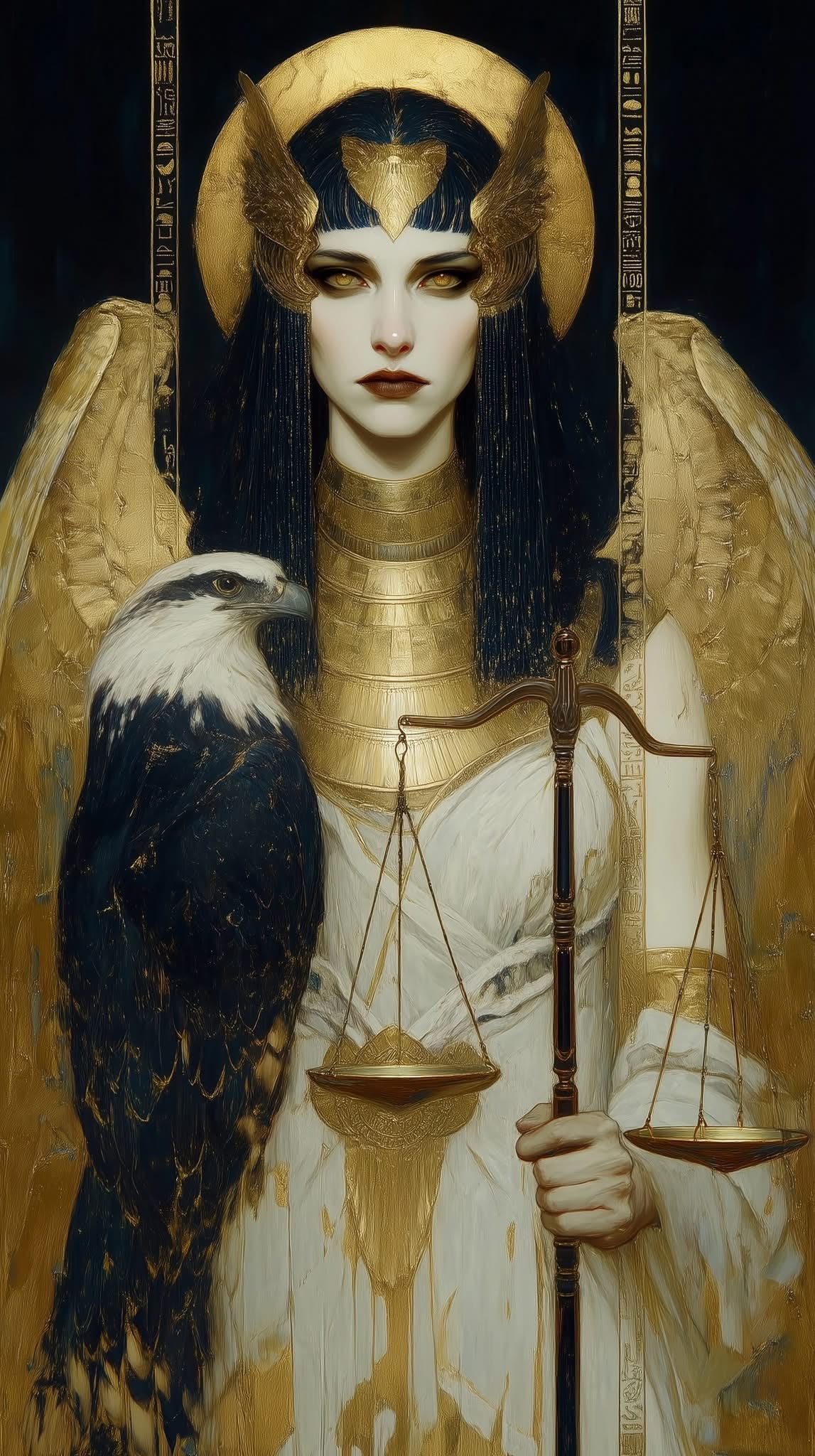Ma’at
“Those who live today will die tomorrow, those who die tomorrow will be born again; Those who live MAAT will not die.”
― Ancient Egyptian Proverb
Goddess Ma’at
Talon Abraxas
Great Maat! Lady of all the gods and goddesses. You who stand with the Thoth in the boat of Ra, the ship of the Sun! The scales and the feather belong to Thee! Your name is Justice and your word is Truth. You are the goddess of all that is upright, genuine and steadfast. Upon you rest the Balance of the Hall of the Mysteries. Upon you depend the equilibrium of the Universe. None can pass between the Pillars whose heart is not Maat, and whose voice is not true. Thank you, O Goddess! Take my hand, and let my Heart, my Soul, and my word be Maat.
- From the Book of Offerings
Maat as a Ruler of Justice
Ma’at was associated with the law in ancient Egypt. From the 5th dynasty (c. 2510-2370 BC) onwards, the Vizier responsible for justice was called the Priest of Maat and in later periods, judges wore images of her.
The 'Spirit of Maat' was embodied by the chief judge in charge of the Egyptian law courts. He had a dual role, serving as both a priest and working directly in the law courts and justice system. The "Priest of Ma’at" began court hearings whilst wearing the feather of Ma’at and all other court officials wore small golden images of the goddess as a sign of their judicial authority, also as a symbol that their judgement would be balanced and fair.
Priests drew the Feather of Ma’at on their tongues with green dye, so that the words they spoke were truth. The priest would rule on the earthly punishment according to the nature of the law that had been broken.
Punishments included imposing fines, corporal punishment and in extreme cases capital punishment. It was considered a crime against Ma’at if a person engaged in jealousy, dishonesty, gluttony, laziness, injustice, and ungratefulness.
The guilty Egyptian was deemed to have violated the Spirit of Ma’at and would face a further judgment in the Underworld during the ceremony of justification in the Hall of the Two Truths. The 'Spirit of Ma'at' detailed in the wisdom literature contained practical guidance with examples and some rules applied in previous law cases. These kinds of instructional texts have been described as "Ma’at Literature".
Judgement of the Dead
The Book of the Dead is a collection of funerary texts and spells from ancient Egypt designed to assist a person's journey through the underworld, into the afterlife. Without these spells, it was believed a person could not proceed. In the book is a spell called the “Forty-Two Declarations of Purity” or the “Negative Confessions”. This spell is comprised of confessions the tomb owner believed he committed throughout his life. It was believed that any crimes committed against Ma’at should be written down as they could easily be forgiven.
In the Hall of Ma’at is where the judgement of the dead was performed in which Ma’at played an important role. The ceremony, called the “Judgment of Osiris,” was named after Osiris, the god of the dead.
When the dead were judged, it was the feather of Ma'at that their hearts were weighed against. If a balanced scale was struck, the deceased was deemed worthy to meet Osiris in Paradise. The weightlessness of their hearts indicated that their souls were not burdened with sin and evil. If the heart of the deceased was found to be heavier than the feather of Ma’at, it would be devoured by Ammit, the soul-eating monster depicted with the head of a crocodile, the forequarters of a lion and the hindquarters of a hippopotamus. Other gods in the judgement hall who were part of the tribunal overseeing the weighing of the heart were also pictured holding a feather but the scales always represented Ma ́at.
Ancient Egyptians worshipped many gods, one was certainly Ma’at, although Egyptian archaeologists now believe she was perhaps more of a concept or an ideal.
It’s reasonable to assume her principles aided the people of Egypt in being better individuals and that she could be compared to the conscience of a person.
There was a small temple dedicated to Ma’at by Hatshepsut, the fifth pharaoh of the Eighteenth dynasty of Egypt, Egypt’s first female pharaoh, at the Karnak temple complex in Luxor Egypt. Largely in ruins, it still preserves inscriptions of some of the viziers of Ramesses III and XI. A previous Ma’at temple existed in this area, indicated by reliefs and stelae belonging to the reign of Amenhotep III. The temple is inside the Precinct of Montu, the smallest of three enclosures at Ipet-Isut.
Maat: Ancient Egyptian Goddess of Truth, Justice and Morality



